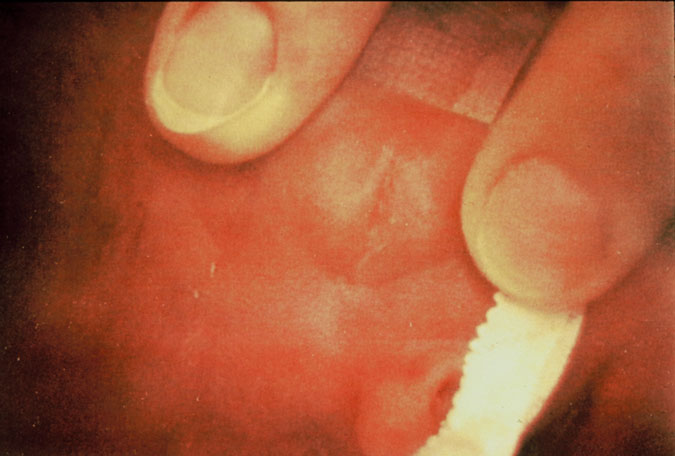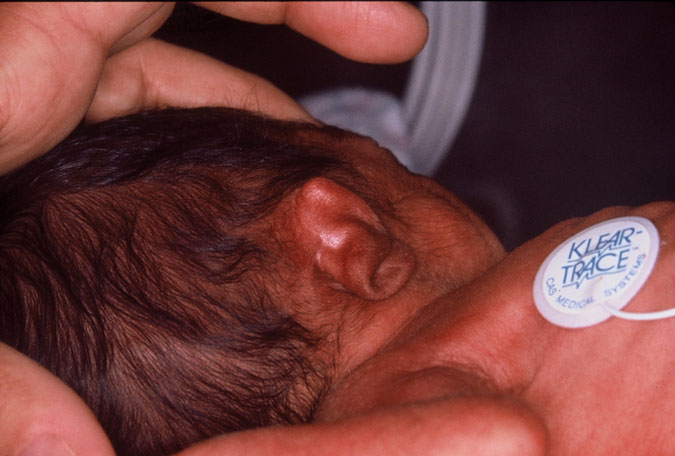Eye/Ear Assessment using the Ballard Score
The pinna of the fetal ear changes it configuration and increases in cartilage content as maturation progresses. Assessment includes palpation for cartilage thickness, then folding the pinna forward toward the face and releasing it. The examiner notes the rapidity with which the folded pinna snaps back away from the face when released, then selects the square that most closely describes the degree of cartilagenous development.

Overview of the Eye/Ear Assessment
In very premature infants, the pinnae may remain folded when released. In such infants, the examiner notes the state of eyelid development as an additional indicator of fetal maturation. (ref 13) The examiner places thumb and forefinger on the upper and lower lids, gently moving them apart to separate them. The extremely immature infant will have tightly fused eyelids, i.e., the examiner will not be able to separate either palpebral fissure with gentle traction. The slightly more mature infant will have one or both eyelids fused but one or both will be partly separable by the light traction of the examiner's fingertips. these findings will allow the examiner to select on the score sheet a minus two (-2) for slightly fused, or minus one (-1) for loosely or partially fused eyelids. The examiner should not be surprised to find a wide variation in eyelid fusion status in individual infants at a given gestational age, as the rate of eyelid un-fusion may be affected by certain stress-related intrauterine and humoral factors. (ref 14)

Eye/Ear Score
| SIGN | PHYSICAL MATURITY SCORE |
SIGN
SCORE |
||||||
| -1 | 0 | 1 | 2 | 3 | 4 | 5 | ||
| Eye / Ear |
lids fused loosely: -1 tightly: -2 |
lids open pinna flat stays folded |
sl. curved pinna;
soft; slow recoil |
well-curved pinna;
soft but ready recoil |
formed & firm instant recoil |
thick cartilage ear stiff |
||

Page 1 of 1